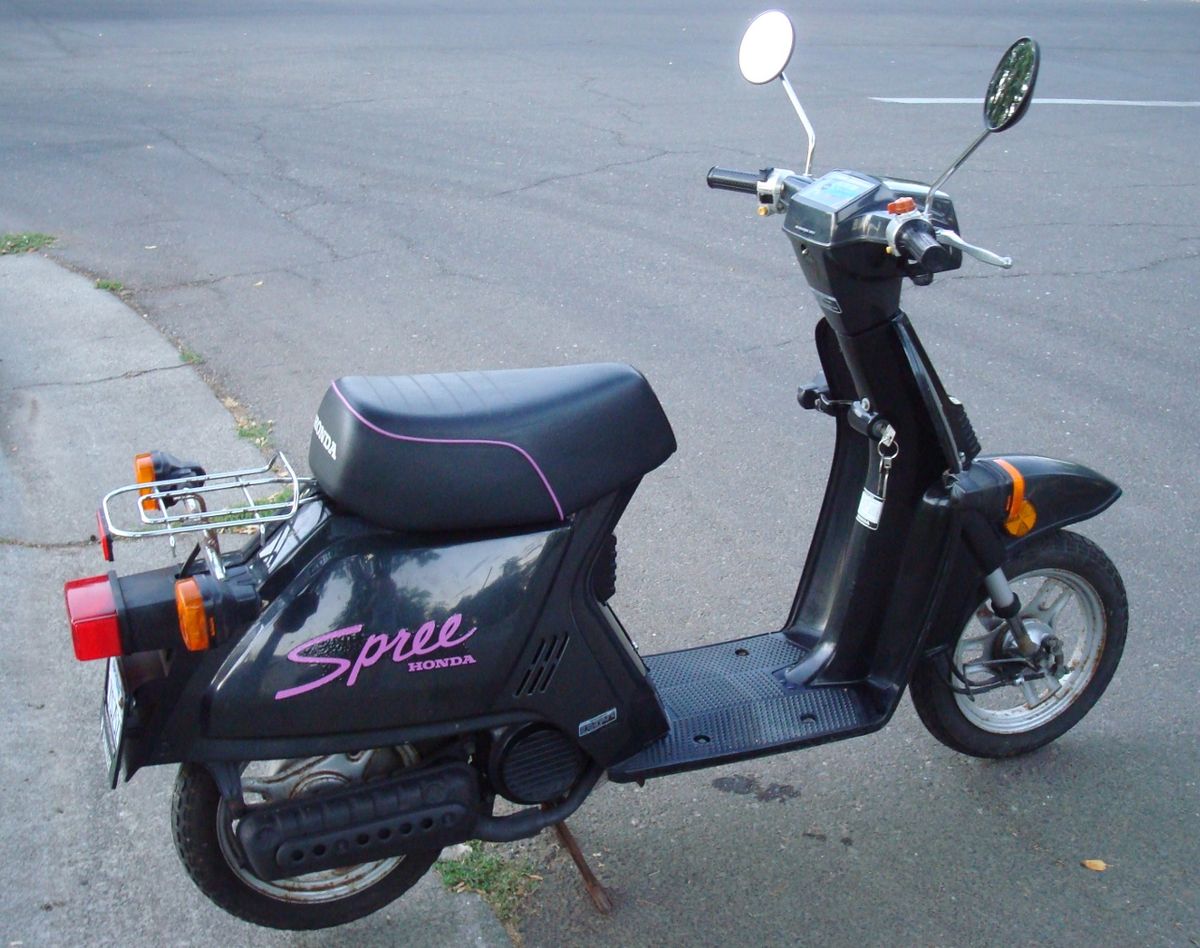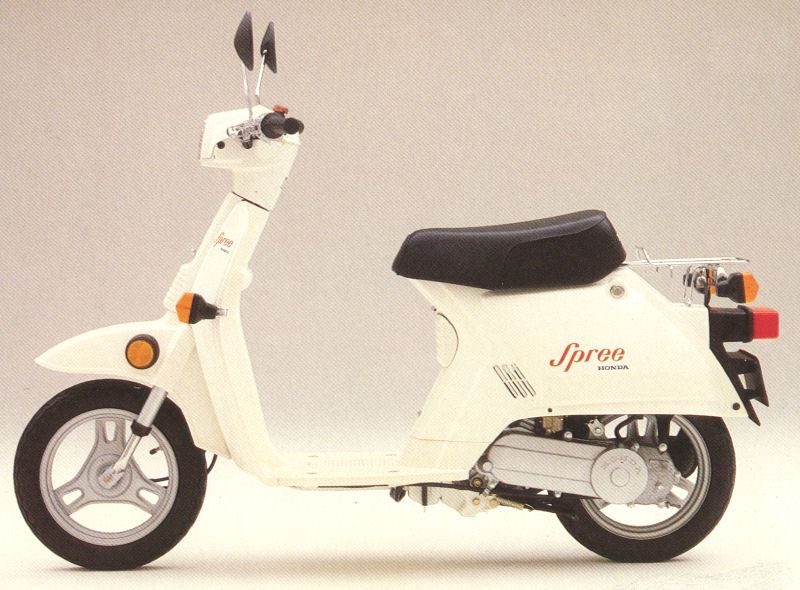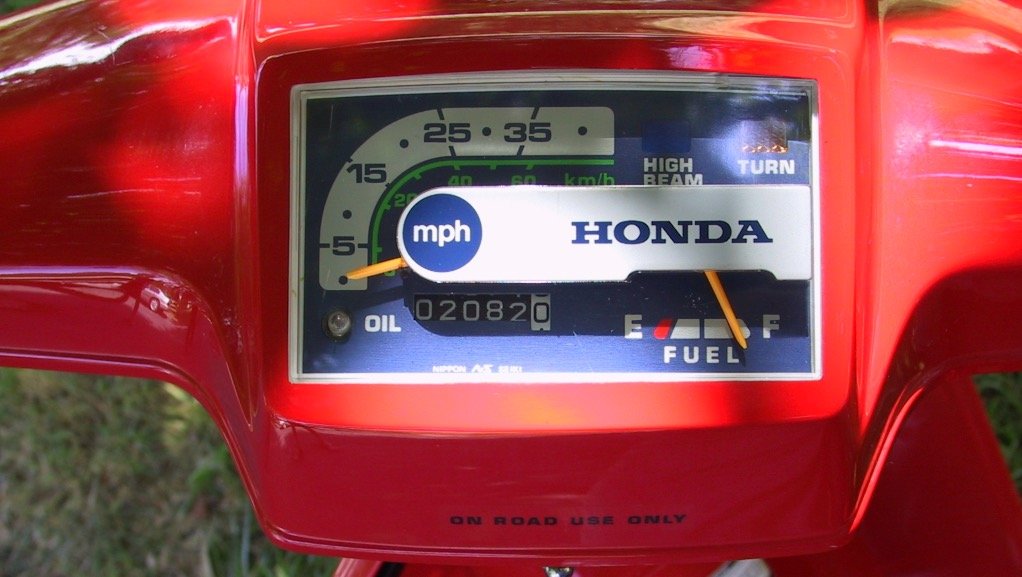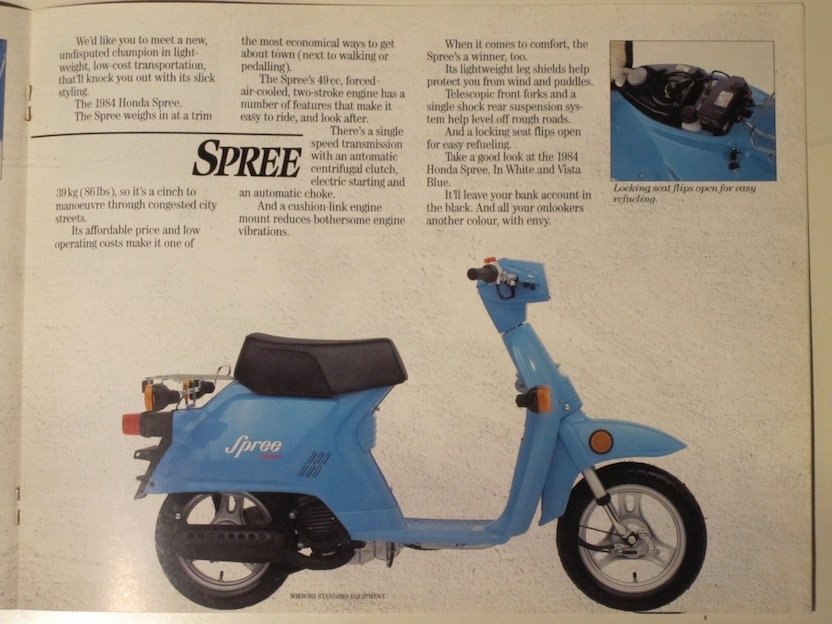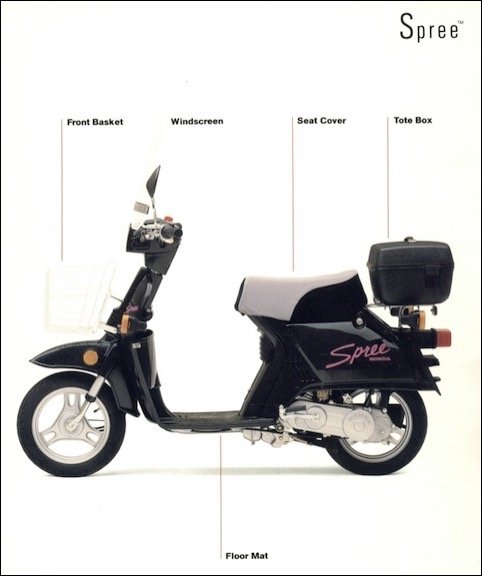HONDA SPREE (NQ50)
The Spree (NQ50) is a remarkably small scooter produced by Honda from ’84 to ’87. It was positioned as Honda’s entry level 50cc scooter, with the larger and more fully featured Aero 50 slotted in as their premium 50cc offering.
From 1984 to 1987 the Spree was offered in both the USA and Canada. Elsewhere in the world, the Spree was sold as the Nifty 50 (most common), Eve and Smile. Usually there were a few differences, such as a round headlight and different gauges. In the UK Honda sold a scooter called the Vision Mini, which was also very similar.
In addition to the regular Spree, Honda also sold an ‘Iowa Spree’ which was restricted to 25mph to meet moped legislation in Iowa and a handful of other states where it was also sold. After 1987 the Spree was replaced by the Honda Elite E/ES, which shared the same motor.
Yearly Changes
For the 1985 model year, Honda redesigned the Spree logo on the side panel. The new logo was much larger. The white Spree above shows the original logo, and the other photos show the new larger logo.
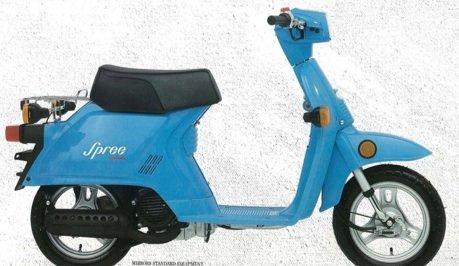
For 1987 Honda added a glove box, which provided some much needed enclosed storage. The spot is great for carrying a few spare tools, a small bottle of oil, or your camera. Honda also revised the blinkers and dash design for this year.
Motor
The Spree was powered by a 2-stroke 50cc engine that used just a belt drive without a multi-ratio variator like Honda’s other scooters. Accordingly, a properly running Spree tops out at about 30mph and thus is moped legal in quite a few states. In states where the moped limit was 25mph, Honda sold a restricted version called the Iowa Spree. You can read more about this 25mph restriction here. In essence, Iowa Spree’s used a heavily restrictive muffler to reduce power. Switching to a regular Spree exhaust will add 5mph unless your eBay score is half plugged with carbon.
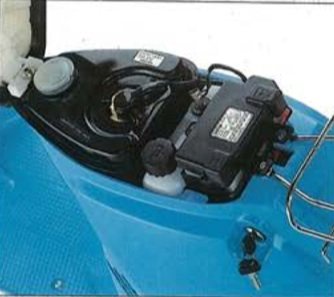
Honda did make a number of tweaks to the Spree’s engine for 1986 that added a few MPH. These changes included the main jet size, piston shape, compression ratio, ports, air fan/shrouds, final drive gears and intake. 1986 – 1987 Spree’s can do 32-33 mph.
If you’re looking for a bit more speed, there are some big bore kits available for the Spree and swapping in the intake/reeds from the SB50 (Elite E/ES) helps performance as well. If you’re really serious about adding speed then you’re best off to swap in another Honda 2-stroke motor. The motors found in the Aero 50, Canadian Dio and SA50 (Elite LX / SR) are quite easy to swap in. Start chatting over at the HondaSpree.net forums if you want to learn more about engine swaps.
After the run was over for the Spree, Honda continued to use this engine for a few more years in the Elite E / ES scooter. There were several differences though including:
- Improved intake/reed design in the SB50, different exhausts
- Different drive case shape (SB50 was arched vs. flat bottom in NQ50)
- Belt drive / pulley was different design
- Smaller transmission bearing in the SB50
- Different porting
Design and Amenities
The Spree was a simple and bare bones scooters. This was apparent in both the price ($398 in 1984) and weight (85-94 lbs). For most of its run, the Spree didn’t have any sort of enclosed storage, but Honda did add a nice glovebox for the final year.
The brakes and suspension on the Spree was basic. Drum brakes were used front and rear, while the 2” of suspension travel takes the edge off bumps. You shouldn’t need much suspension anyways for the kind of speeds the Spree can achieve.
There are almost no aftermarket parts for this scooter but Honda did sell a decent range of accessories. Check out the image at the bottom of this page for a look at these accessories.
Discussion
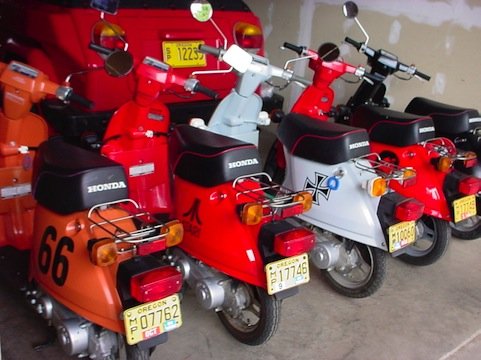
Living with the Spree is a mixed bag. On the downside, the physically small size doesn’t work for larger riders and all Spree’s except the ’87 models have zero storage except for the chrome rack on the back. On the plus side, the Spree is ridiculously light, so it’s very easy to toss into the back of your pickup truck or yank around the garage. It also gets pretty good milage for a 2-stroke. 70-80mpg is what you can expect under normal usage.
Pros:
- Lightweight
- Fairly popular so OEM parts aren’t too hard to find.
- Great mileage
- Beautiful gauges
Cons:
- Slow
- Limited aftermarket parts
- Not suited for bigger riders
- Lack of storage on ’84-’86 examples
Links:
’84 – ’87 Honda Spree Service Manual – Mandatory download. This is essential.
MotorscooterGuide Forums – Visit the forum on this site to chat about your scoot.
HondaSpree.net – A great forum dedicated to the Spree and other small Honda’s.
ScooterSwapShop – Aftermarket Spree Parts
Colors:
- 1984: Sparkling Red (USA only), Cortina White, Vista Blue (Canada only)
- 1985: Sparkling Red, Black
- 1986: Sparkling Red, Black, Shasta White / Lollipop Green (only available on ‘Special’ version)
- 1987: Sparkling Red, Black, Kriti Blue
Key Specs:
- Engine: 49cc Air cooled 2-stroke single cylinder with a 15 degree incline from vertical
- Bore & Stroke: 41.0 x 37.4 mm (1.61 x 1.47 in)
- Compression Ratio: 7.2:1 (’84, ’85), 6.8:1 (’86, ‘87), 7.0:1 (Iowa)
- Lubrication: Oil injection
- Engine Weight: 22 lbs (’84, ’85), 24 lbs (’86, ’87)
- Idle: 800 +/- 100 rpm
- Carburetor: 13mm PA29C (’84 – ’85), PA29H (’86 – ’87), PA29L (Iowa)
- Air screw settings: 1⅞ turns out ’86: 1½ turns out After ’86: 1⅜ turns out
- Float level: 12.2 mm (0.48 in)
- Frame: Backbone Shaped
- Front Suspension: Telescopic fork, 56 mm (2.2 in) travel
- Rear Suspension: Swing Arm 58 mm (2.3 in) travel, After ’86: 45.5 mm (1.79 in)
- Maximum Load, 82 kg (180 lb)
- Tires: 2.50-10-2PR (front and rear)
- Tire PSI: 18/24 (front/rear)
- Brakes: Drum (front and rear)
- Fuel Capacity: 2.5 L (0.66 U.S. gal)
- Caster Angle: 27 degrees
- Trail: 76 mm (3.0 in)
- Length: 1,530 mm (60.2 in) After ’86: 1,505 mm (59.3 in)
- Width: 590 mm (23.2 in)
- Height: 925 mm (36.4 in) After ’86: 950 mm (37.4 in)
- Seat Height: 27.3” / 700 mm
- Wheelbase: 1065 mm (41.9 in)
- Ground Clearance: 105 mm (4.1 in)
- Dry Weight: 85.5 lbs (’84, ’85), 92 lbs (’86), 94lbs (’87)
- MSRP: $398 (1984)

